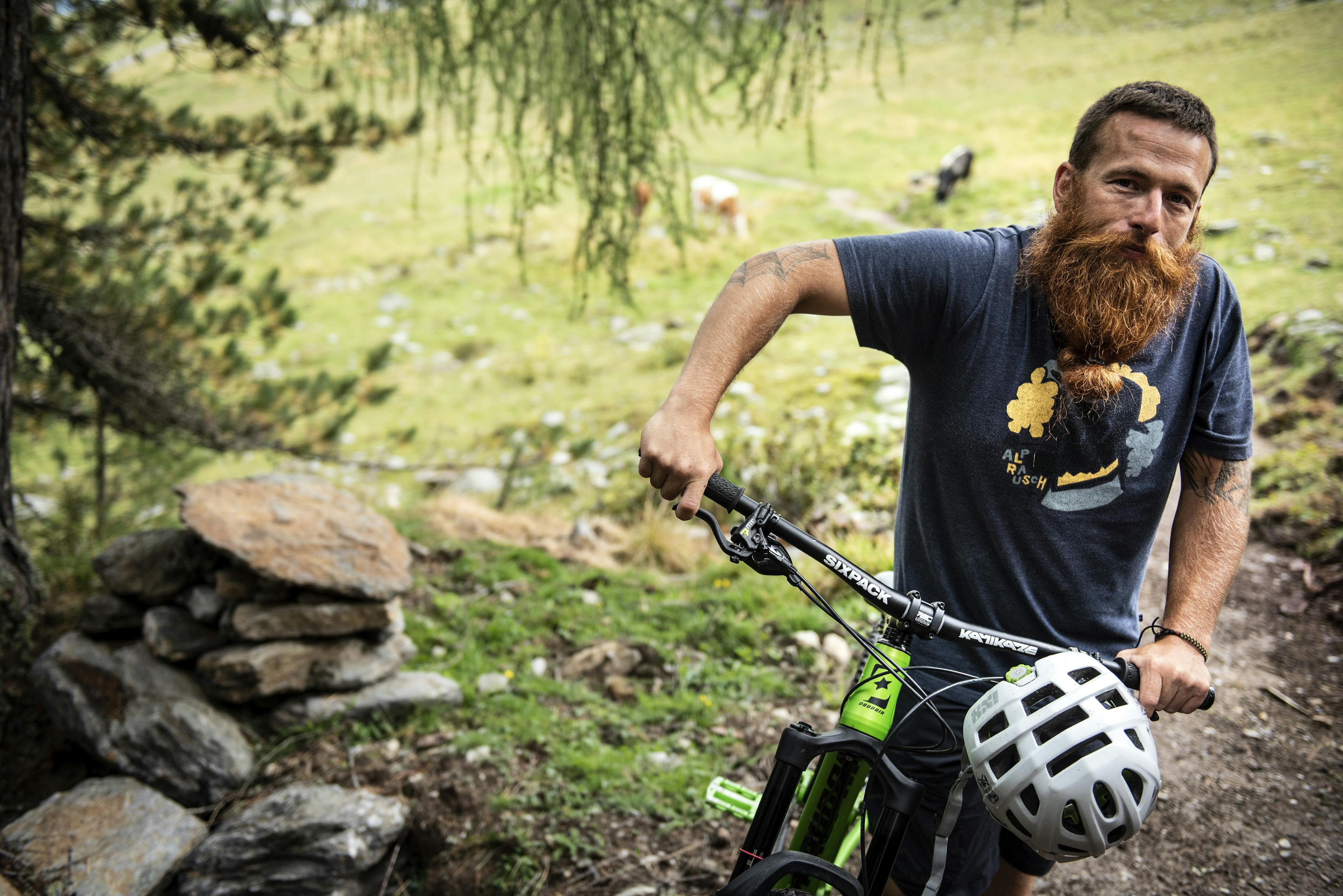The Trail Doctor

An unusual doctor roams the woods and meadows of Laces and it’s surroundings. During daily examinations with pickaxe and rake, Gabriel Tappeiner tends to bruises and scratches inflicted on the local hiking and mountain bike trails.

It’s a good thing that Gabriel Tappeiner is one of those people who would rather be outdoors than in. After all, this is also one of the most important requirements for his job: For hours every day, he walks the network of trails in Laces, ensuring that damaged trail sections are kept in good shape. In point of fact, Gabriel is an apple farmer, who used to work as a bike guide on the side. When the Tourist Info, which is responsible for maintaining trails, increasingly asked him to prepare a path here or fix a trail there, he began to wonder: “I thought to myself at some point, I either need to stop doing this altogether or I need to found a company.” So, in 2015, Gabriel founded the “Traildoctors”. Since that time, he and his staff are responsible for the long-term maintenance of the 180 km of hiking trails and a further 40 km of bike trails in the community of Laces.
Diagnosing the perfect trail
The Trail Doctor prefers to perform his daily check-ups on foot, from bottom to top. Wouldn’t it be faster to cycle down the track? “If I cycle, I’ll be under the mistaken impression that everything’s OK. On foot, however, I have a much better impression,” explains Gabriel. Having a close look is key: Many things on the trail that wouldn’t bother a hiker can be very dangerous for a mountain biker. For instance, says Gabriel, “after a storm, when the rain washes out the curves, or exposes roots that protrude.” If the damage is more significant, Gabriel takes photos and sends his staff, who then move in with the right tools and repair the section. About every three weeks, Gabriel and his staff tend the trails. The more it rains, the more work they have to do.

Through Val Venosta by bike
For some reason, the Trail Doctor, here in the forest with his green eyes, red beard, and tools in hand, reminds me of the busy elves who do their work at night so that everything is perfect again the next day. Have you ever stopped to wonder how the maintenance of hiking and biking trails works?
As soon as the snow on the Sonnenberg mountain range begins to melt in spring, the Traildoctors team mobilise to get the trails in shape for the upcoming season. This means cutting grass, clearing branches and stones out of the way, reshaping curves, fortifying walls, collecting rubbish, assembling signs and refreshing trail markings. Then they continue on the other side to the Nörderberg mountain.
The Trailblazer
Gabriel prefers to work without sketches or maps. “I have the route in my head,” he explains. The route is marked and explained stage by stage to the employees, who then dig, pick, shovel, root out, build bridges and curves, and lay drains. The Traildoctors team works about ten days for one kilometre of new trail. That is if they can make use of a small excavator. For manually landscaped sections of the trail, they need about three times as long.
“As if they had always been there” is how the new trails should look once the Traildoctors have finished their work. This means a lot to Gabriel. “A new trail is always an intervention in nature, that much is quite clear. We always try to make the trail as natural as possible,” he explains.
Share and share alike
Both hikers and bikers can share many joint-use trails in South Tyrol. “I don’t think that separate hiking and biking trails are needed everywhere. With the necessary mutual respect, it is possible to share trails smoothly,” says Gabriel, “but on those trails where there is a lot of traffic, it definitely makes sense.”

He who brakes, ruins the flow
And then there’s the image of bikers: “People think that mountain bikers are always going downhill (in other words braking),” says Gabriel. “Yet only a small fraction of bikers ride downhill. Most take their time, stop, sit on a bench and enjoy the scenery.”
So, going full throttle and then braking hard is not the way? The former bike guide shakes his head: “That’s not really how you ride. On the contrary: When building a trail, “the route is planned in such a way that you have to brake as little as possible. Instead of steep descents, taking wide curves is preferable,” explains the trail builder, “they are safer and it’s more fun if you aren’t on the edge of your bike seat all the time.” It’s also less expensive for bike maintenance because where you brake a lot, brake shafts and erosion damage occur. “By now the bikers have understood this from personal experience,” says Gabriel.
The Trail Doctor’s personal favourite trail? Gabriel reflects: “I couldn’t say definitively. It always depends on my state of mind. Sometimes I prefer a more comfortable trail, sometimes I’m in the mood to rumble.”

